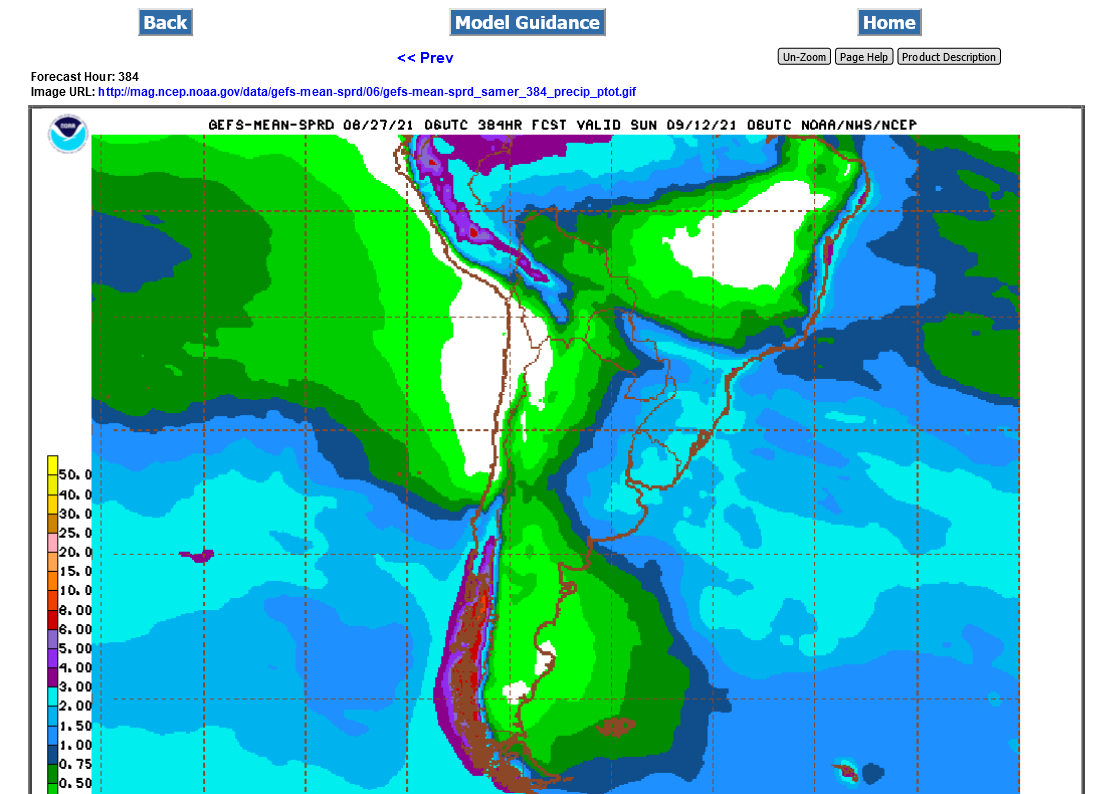
We are approaching the end of the climatologically driest part of the year in the major coffee regions of Brazil as their meteorological spring gets closer.
The models are suggesting a notable increase in rainfall chances starting around this weekend. Of course, this is just model output and thus rains won't necessarily verify.
Looking at the model output fwiw, is this unusually early for it to show up on the models? Or is this common on the models? Also, if it were to actually rain, would it be bearish this early in the season? Or might it be bullish due to interrupting the harvest or possibly causing a too early flowering that is extra vulnerable to the increased possibility of not enough follow up rains since it is early?
Is the situation different with regard to rains from normal years since there was significant frost damage?
Mike or anyone else, any thoughts?
Great questions Larry!
This seems extremely early for the rainy season to begin.
Rains are usually bearish in the Spring because they trigger flowering but as you noted, if they are not followed up by more rains, in lets say 2-3 weeks, the blooms will abort and not become cherries.
Additional rains can still come after that, even into November and trigger additional flowering but aborted blooms expend and waste alot of plant energy that would have gone into yield for that years crop.
Another item. Producers have a huge challenge when the first blooms start really and take, then additional blooms follow with more rain events, all the way into, possibly early November?
Why is that?
Because the maturity of the cherries/crop is spread way out from the first bloom to the last bloom.
This makes for a headache at harvest because you need to pick the mature cherries at just the right time. The first ones will be ripe and red and ready to be picked in (guessing) April if flowering was triggered this early. The later ones might not be ready until June/July. The earlier harvests could do some damage to the still ripening crop.
Another possible item. There needs to be a minimum period after harvest and with dry weather during Winter, to trigger the most robust/abundant flowering.
Not sure what the optimal is but would think that we are pushing it with a rain event this early(not dry enough long enough or after harvest like you mentioned).
I'd have to check but I think this years harvest should have been completed.
Another item is the adversity and damage from the cold weather this last Winter, along with very low soil moisture.
My guess is that this means the plants don't have as much reserve energy as usual and can't afford anything except optimal weather conditions.
For example, they could abort flowers several days earlier than usual without follow up rains. Not sure. This is not certain.
It can be odd sometimes with plants of this nature. You can sometimes see an even MORE robust flowering with the right amount of really dry weather because the plantt gets into an extreme mode focusing on reproduction. Again, I'm just saying that I don' know for sure and we can't assume there isn't an exception like that here.
BIG TY to WX and MetMike
How did you know that Friday might have been a daily/weekly cycle low!! Low could be confirmed with a rally over 188 sept./190 dec.
IF, IF 'your' fundamentals now exhibit a rally based upon Friday's technicals, one could project a rally to the 230 level.
FWIW: Buy stop 190 kcz. Margin is big! ETF is JO Get long
Disclosure--went long around noon Monday
YW tjc and thank Larry.
I'm showing this article below for a couple of reasons.
1. It has some basic information for, especially beginners, which is the opposite of you 2 guys but others here might learn from.
2. It has a seasonal chart that I want to use to point out a couple of things. That coffee is often under pressure during the June/July harvest, then has some strength while the new crop is developing. This holds most of the time..........when there is NO FREEZE/FROST. Obviously when there is a freeze/frost, the price will spike MUCH higher during that same period..........which was what happened this year. The other point is that after harvest is over WHICH IS NOW, coffee often sees some strength, sometimes amplified by the market trading dry weather and dialing in risk premium when the crop needs a bloom triggering rain (with sharp drops when the rain forecast increases closer to the rain event). This could be part of the reason for the drop in Sept to a low in early Oct(from the normal first rain even showing up at the near optimal time for flowering).
Regardless, August is seasonally a good time to be long coffee(but seasonals are messed up in 2021)
This one is REALLY tricky because, as we noted, rains TOO early may actually mess up the plants.
https://atas.net/volume-analysis/market-theory/coffee-futures-7-things-you-should-know/

metmike: Obviously this has happened before.......even earlier.
* Mid-August rains triggered flowering in important coffee areas
* Development of flowers to beans depends on adequate weather
* Risk of lower yields if blooming fails to develop well
ESPIRITO SANTO DO PINHAL, Brazil, Sept 1 (Reuters) - W idespread rains across the southern half of the world’s main arabica coffee region in Brazil are triggering early blooms on trees, which will form the first beans to mature for the 2017 harvest.
The first wave of rains, which broke a dry spell that started in June, pushed through southeast Brazil in mid-August, unleashing moderate flowering seen by Reuters while on a tour through the main coffee belt on Wednesday.
The early blooms are potentially a good sign for next year’s crop but it is too soon to say for sure. The question of whether these early flowers will yield coffee that makes it to market is an important one for traders, local roasters and international buyers of the commodity.
The world is entering its second year of a global coffee supply deficit that commodities analysts at Rabobank forecast will deepen to 2.2 million bags in 2016/2017.
All may be for naught, though, if there is too little rain in the coming months to sustain the development of coffee buds and cherries, said agronomist Ezelino Tessarini at the Coopinhal cooperative, which moves more than 125,000 bags of arabica beans a year.
“I’m not sure the coffee from these blooms will amount to much. It’s very early,” Tessarini said from a warehouse as he helped advise producers bustling through the hilly town now that most of the current bumper crop has been harvested.
From flower to a ripe cherry, it takes just over six months, Tessarini said, adding that the beans formed from these flowers would be ready in March, “which is still two months from the traditional start of harvest here.”
metmike: I will say that based on the markets reaction and the physiology of coffee plants, that these rains are too early because
1. They increase the risk of blooms aborting and draining plant energy(that is low from the freezes and drought) that will cause lost yields for the 2022 crop.
2. They will mess up the harvest next year, even if they take because they will ripen waaaay earlier than the later blooms, which are still possible into November..
https://www.scielo.br/j/bjpp/a/xSBXnvrDDczyDbBtzspGs3v/?lang=en
Unequal fruit ripening is practically inevitable under natural conditions because coffee blossoming in non-equatorial regions as in south-central Brazil occurs at different times (e.g., from August to November in the main Brazilian coffee production areas), in two to four or more gregarious and synchronised blossom periods (Barros et al., 1978; Rena and Barros, 2004). In addition to the temporal and physiological hierarchy of flower bud initiation and differentiation within each branch, and also among different nodes of the same plagiotropic branch (which are strongly affected by environment-genotype interactions), the occurrence of sporadic and sometimes low-intensity rains during the latter phases of flower bud development is believed to be the one of the uncontrolled factors responsible for several blossom periods in arabica coffee (Rena et al., 2001; Rena and Barros, 2004). As a consequence, fruit ripening is remarkably unsynchronised, with serious consequences for coffee management and production. The large variation in the percentages of ripe, green and dry cherries often observed at fruit harvesting time leads to (i) an increasing cost of coffee production since more than one harvesting operation will be necessary, which may also cause mechanical damage to the coffee trees; and (ii) an impaired beverage quality due to a low percentage of ripe cherries as compared to that of green and dry cherries, and a greater number of bean defects and ineffective control of pathogen and insect attacks on coffee fruits (Rena and Barros, 2004; Guerra et al., 2006).
Today's KC rise was supported by the largest daily drop in the dollar vs real since at least April from what I can tell.
Thanks Larry,
That could have been the biggest reason but the market obviously didn't see the upcoming rains as bearish, though soil moisture is low.
Below is the 90 day precip % of average which doesn't tell us anything about coffee because average rain during the last 3 months is extremely low(its the dry season)
The 2nd map is the last 180 day precip % of average. That one shows how dry its been from N. Argentina to EastCentral Brazil and coffeeland.
https://www.cpc.ncep.noaa.gov/products/Precip_Monitoring/Figures/global/n.90day.figb.gif
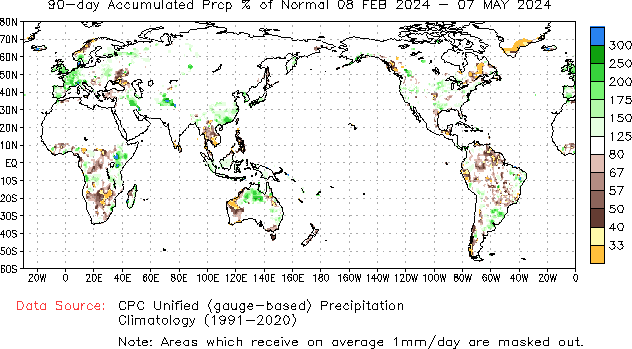
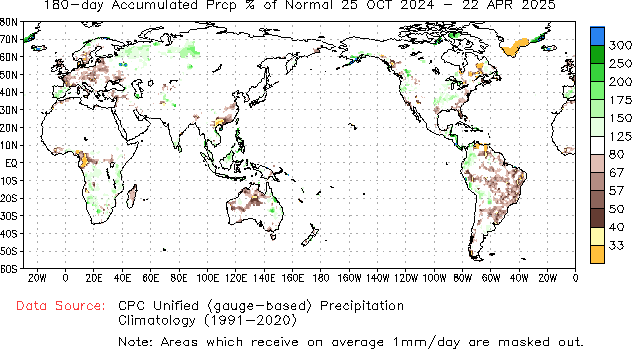
As you probably know, the dry season for coffee country in Brazil often continues well into September but this year, we have some early rains in the forecast. For those that are not aware of where the main growing areas are:
This is where they grow coffee in Brazil.....the worlds biggest producer.
The higher the number below, the greater the production. 1=highest.
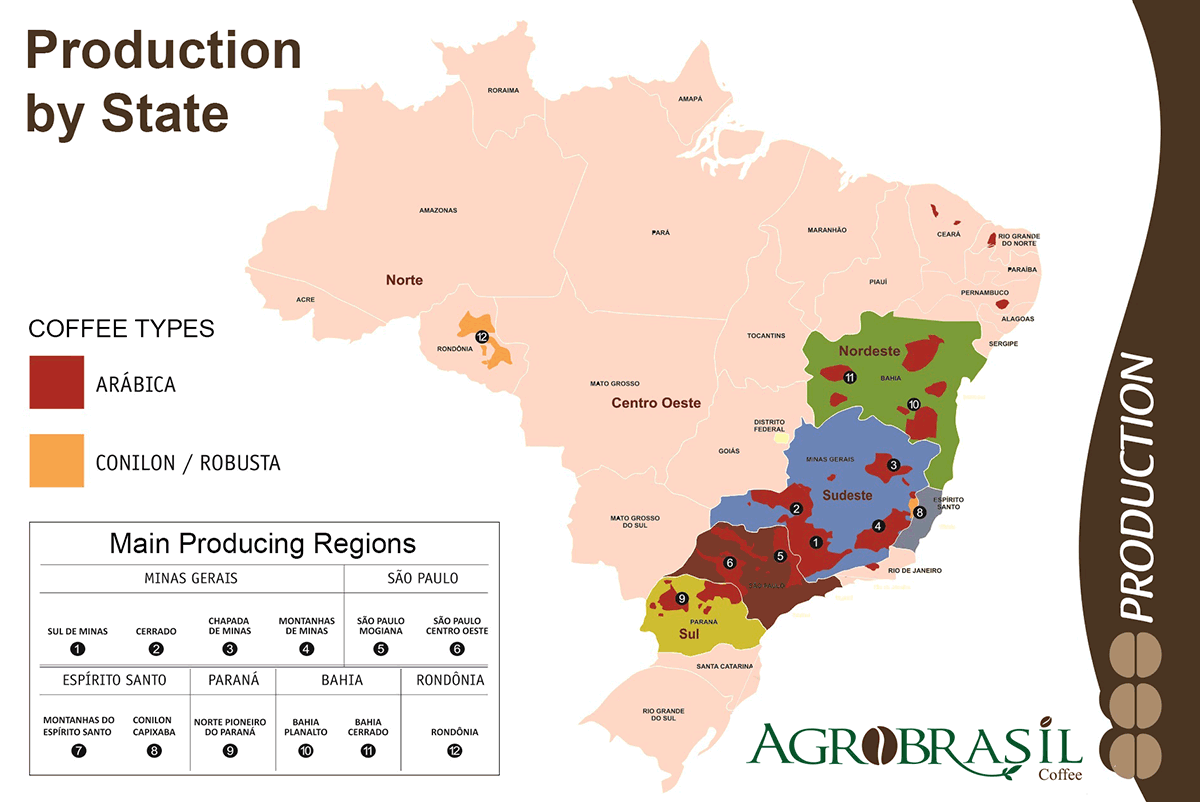
Looking at the global picture of coffee production below.
Brazil matters the most!
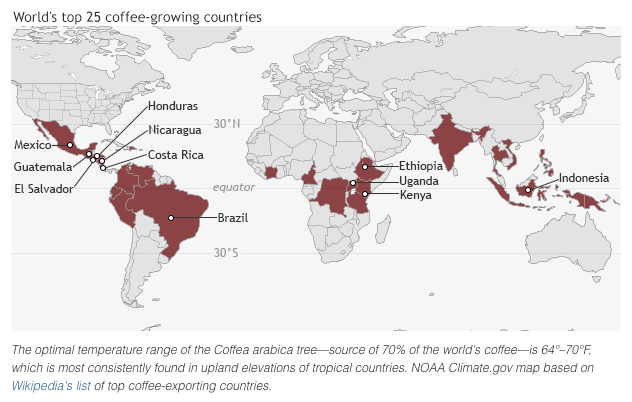
Previous thread about coffee.
https://www.marketforum.com/forum/topic/72552/
GFS forecast for South America........2 week rains. 1+ inch rains get into southern(40-50%?) of coffee-land.

Less rains today on the same model.
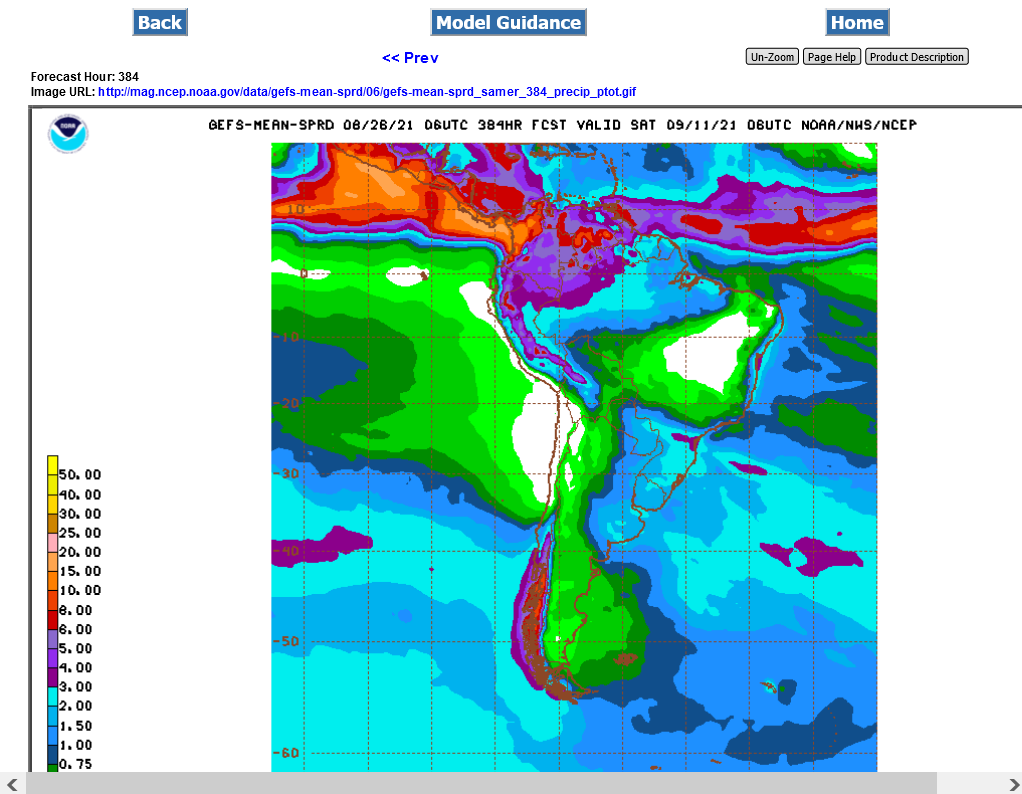
BREAKOUT!!
Huge breakout tjc!!!
Great call. I don't know if that has anything to do with it.
Crude spiking higher from Ida is bullish.
2 week rains below: